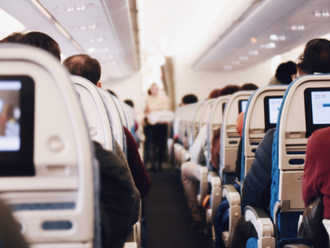In Seoul’s six-century old central district, Jung, the titanium-encased Dongdaemun Design Plaza rises above the ancient city walls and pagoda-shaped tiled roofs. The spaceship-like mix of mega mall and cultural hub is a striking symbol of the city’s hyper-modern vision.
Hemmed in by traditional markets, 24-hour shopping zones and 5-star hotels, the Dongdaemun — meaning great eastern gate — embodies the blending of futurism with heritage, and architecture with nature in new-look Seoul, says starchitect Zaha Hadid. “The form of the plaza revolves around the ancient city walls.”
Nurturing culture For Hadid, the DDP, as it’s popularly called, plays a crucial role in feeding the cultural vitality of the city. It’s an ultramodern take on an ancient pagoda.
The city-run Seoul Design Foundation aims to develop it into “a hub of global design”.
“We are implementing various projects to promote Seoul’s design industry and spread design culture through this monumental multipurpose complex,” it reports.
World capital
Since being elected World Design Capital in 2010 by the International Council of Societies of Industrial Design, a Montreal-based non-profit urban planning organisation, the city has been in the grips of an increasingly feisty design boom.
Soulful design, of course. In fact, Seoul’s sensitive makeover has won admiration from arguably the design capital of the world. In 2011, Copenhagen-based NGO Index — whose mantra for global sustainability is Design to Improve Life — bestowed its Community Award on Seoul.
CEO Kigge Hvid likens Seoul’s design strategy to the economic transformation dubbed The Miracle on the Han River, when the country picked itself up from the ashes of the Korean War.
Now she says the urban renaissance is bringing quality of life to the city’s 10 million citizens. “For the first time in its history, Seoul is free to focus on beauty, citizen involvement and quality of life.”
And its streetscapes, signage and city squares reflect this aesthetic.
Futuristic sleekness and modernity blend seamlessly with splashes of tradition incarnated by the colour red. Dancheong red — historically used in the paintwork on old woodenbuildings — is applied liberally in the civic redesign plan, to public benches, bus shelters and bicycle-sharing schemes.
Former mayor Oh Sehoon set the ball rolling around 2008. “Design is the power to change the world for the better,” he declared, before channelling the city’s creative energy into making Seoul “a globally recognised city of design”.
Asian hub
Public art, urban woods, funky high-tech infrastructure and eye-catching futuristic architecture are transforming Seoul into a glittering Asian metropolis of world-class design to rival the likes of Tokyo and Shanghai.
The move to reclaim the city spaces for the people is best on show in Gwanghwamun Square. The size of 16 Olympic swimming pools, the ceremonial plaza — swept in by the 1395 Gyeongbokgung royal palace — reopened to the public in 2009. Once a stately relic of drab administrative buildings, it has morphed into a modernist, lightfilled, animated space. Towering effigies of national heroes remain, but fountains, light shows, performing art centres and exhibitions have breathed in new life.
Alongside the golden statue of erudite 15th-century King Sejong, the characters of the Korean alphabet, Hangul, project on a water screen.
Water clearly has a figurative place in Seoul’s urban and social renewal. Ponds and pop-jet fountains transform the square into a visual spectacle by night — illuminating the city in a forward-looking glow.
Glittering attractions
The same spirit is seen in the revitalisation of the Han River banks, as well as the expanding network of walkways, cycle paths and parks.
Under the Seoul Street Design project some 30 streets have been beautified, illuminated and greened since 2009. Within metres of the high-tech district of Gwangjin — where the eight-storey Techno Mart mall has 2,000 electronic stores — is the almost bucolic-looking pond and sculpture-filled Yongsan Family Park. Another few minutes away is the Banpo Bridge Rainbow Fountain — the world’s longest bridge fountain. By night its 200 lights spot rainbow-coloured jets of water, synchronised to music. High tech as it is, thefountain’s multiple formsare meant to evoke waving willow branches and willow leaves.
Nature is ever present throughout Seoul, city of the future.









